|
Blue
Jay / Geai bleu (Cyanocitta cristata) |
Seasonal
status at MBO:
| JAN
|
FEB
|
MAR
|
APR
|
MAY
|
JUN
|
JUL
|
AUG
|
SEP
|
OCT
|
NOV
|
DEC
|
|
|
|
QUICK TIPS:
| 1) Look
at the alula and primary coverts - on HY/SY birds they are brownish/grayish
and unbarred, and on AHY/ASY birds they are blue
with prominent dark bars.
2) Check
for moult limits among the greater coverts - HY/SY
birds often retain dull grayish blue outer coverts
contrasting with brighter blue inner coverts, while on
AHY/ASY birds all greater coverts are bright blue
with dark barring.
3) Look at
the upper mandible lining - on HY/SY birds a
mix of white and black, on AHY/ASY birds mostly
to entirely black.
Species account updated April 2009 |
|
Ageing and sexing guidelines:
Ageing and sexing details:
|
JAN - JUL: after-second-year
unknown |
ASY
Blue Jays are most easily separated from SY individuals by having
distinctly blue coverts across the wing, including the alula.
Usually faint to distinct barring is also visible on the alula and primary
coverts, as on the bird below. Sex of Blue Jays can be determined
only during the breeding season, via brood patch or cloacal
protuberance.
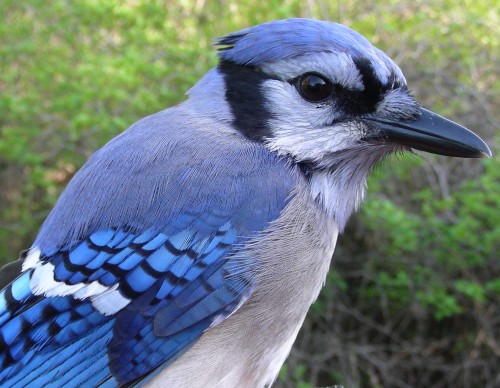
Photo by Marie-Anne Hudson,
McGill Bird Observatory (QC), May 2008
ASY
Blue Jays are easily recognized by virtue of their blue primary coverts
and alula, all of which have some dark barring, although sometimes it is
relatively faint.
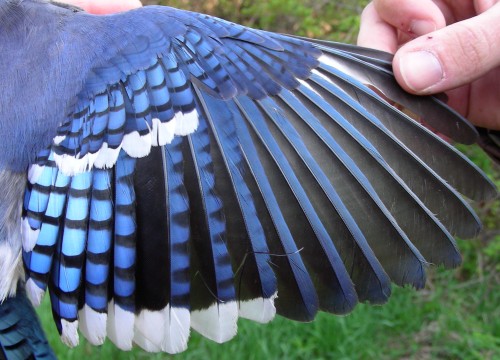
Photo by Marie-Anne Hudson,
McGill Bird Observatory (QC), May 2008
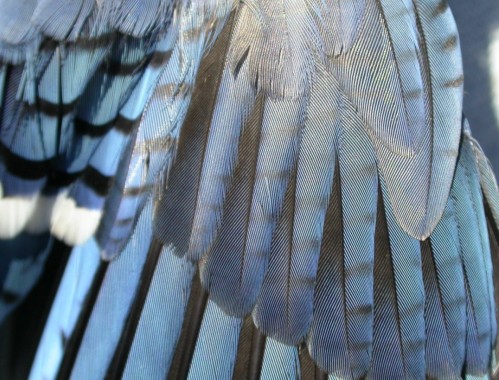
Photo by Marcel Gahbauer,
McGill Bird Observatory (QC), March 2005
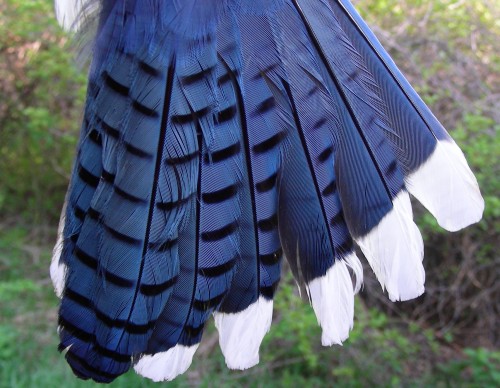
Photo by Marie-Anne Hudson,
McGill Bird Observatory (QC), May 2008
RETURN TO AGE/SEX
OVERVIEW
|
JAN - JUL: second-year
unknown |
SY
Blue Jays have a visibly dull grayish alula and primary coverts. To
some extent this is visible on perched birds, as below, but it is usually
much easier to see on the open wing. Sex of Blue Jays cannot be determined
by appearance outside of the breeding season.
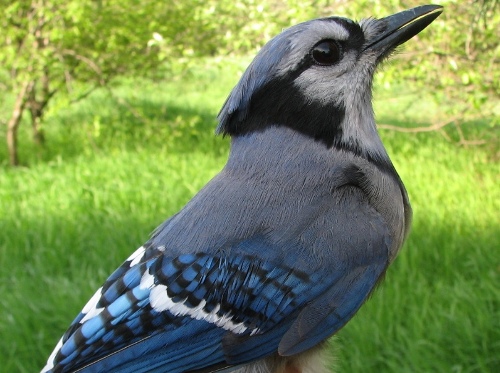
Photo by Barbara Frei,
McGill Bird Observatory (QC), May 2008
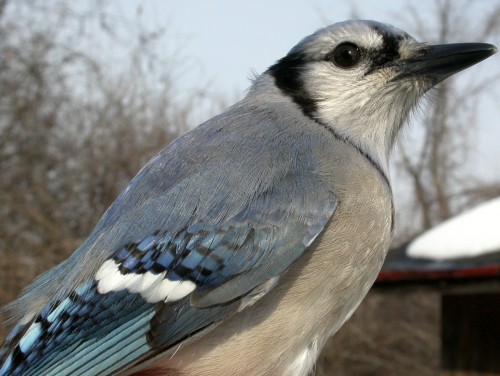
Photo by Marcel Gahbauer,
McGill Bird Observatory (QC), March 2005
The
grayish-brown tinged alula and primary coverts of SY Blue Jays contrast sharply
with the bright blue of the greater coverts and primaries. A
distinct molt limit may also be visible among the greater coverts, as in
the third photo below.
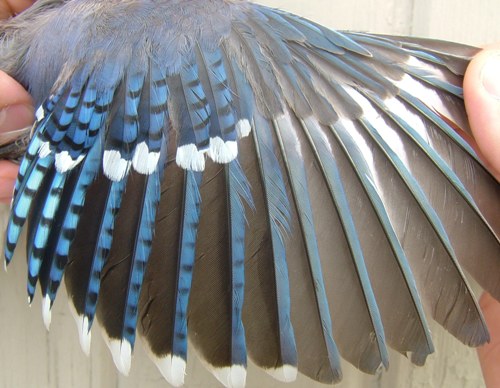
Photo by Peter Pyle, MerryLea (IN), May 2005
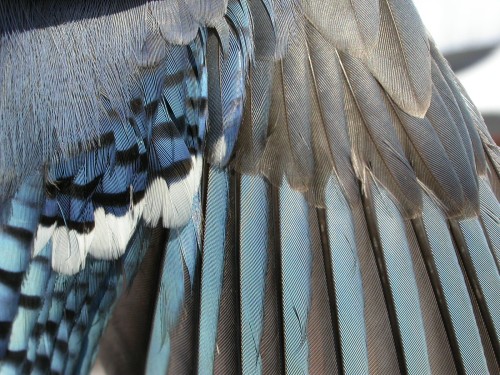
Photo by Marcel Gahbauer,
McGill Bird Observatory (QC), March 2005
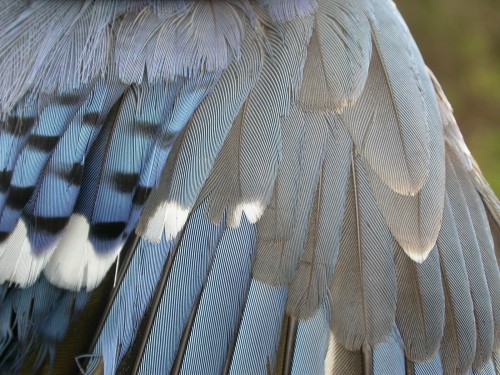
Photo by Marcel Gahbauer, McGill Bird Observatory (QC), May 2006
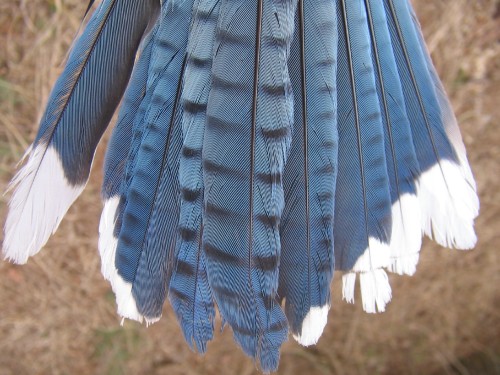
Photo by Marie-Anne Hudson,
McGill Bird Observatory (QC), April 2006
RETURN TO AGE/SEX
OVERVIEW
|
JUL - DEC: after-hatch-year
unknown |
AHY
Blue Jays in fall are most easily separated from HY individuals by having
distinctly blue coverts across the wing, including the alula.
Usually faint to distinct barring is also visible on the alula and primary
coverts, as on the bird below. Additionally, the roof of the mouth
is entirely black in after-hatch-year birds. Sex of Blue Jays cannot be determined
by appearance outside of the breeding season.

Photo by Marcel Gahbauer,
McGill Bird Observatory (QC), October 2004
After-hatch-year Blue Jays lack any brownish colouration to the wing;
rather, all the primary coverts are blue, and the greater coverts are
uniformly bold blue and white. The alula is also blue, and often
has distinct dark bars across it, though this can be variable. The second example below shows the flight feathers in moult, which only after-hatch-year Blue Jays replace in fall.
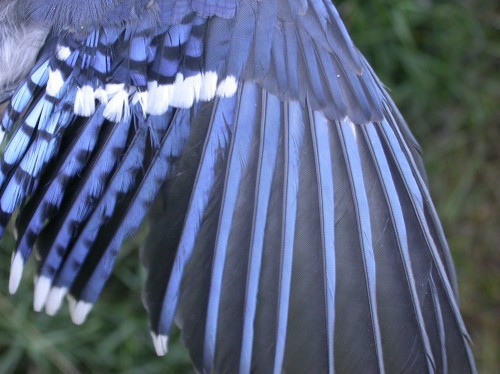
Photo by Marcel Gahbauer,
McGill Bird Observatory (QC), September 2005
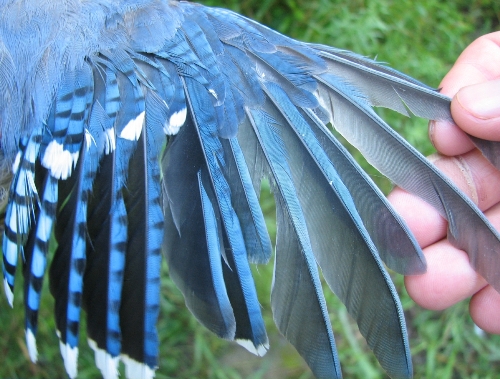
Photo by Barbara Frei,
McGill Bird Observatory (QC), August 2008
The tail of Blue Jays is not particularly
indicative of age, though on after-hatch-year birds the blue tends to be
somewhat more vivid and the black bars more pronounced than on younger
birds.
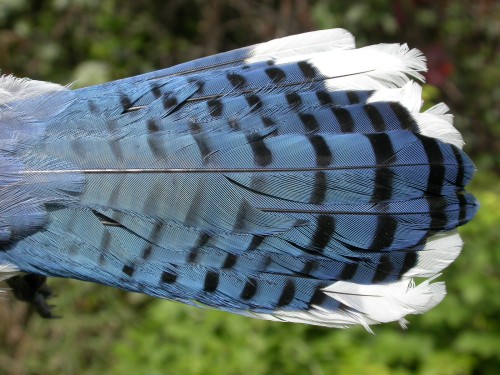
Photo by Marcel Gahbauer,
McGill Bird Observatory (QC), September 2005
RETURN TO AGE/SEX
OVERVIEW
|
JUL - DEC: hatch-year
unknown |
In
fall, Blue Jays cannot be sexed, but it is fairly straightforward to age
them. The moult pattern on the wings is the most useful feature,
but in addition to the plumage characteristics noted below, a mottled
white and black pattern on the roof of the mouth is indicative of a
hatch-year bird.
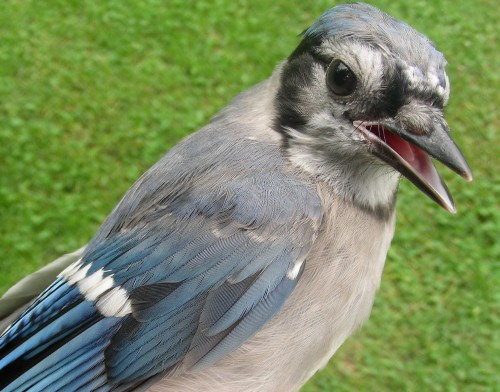
Photo by Marie-Anne Hudson,
Le Nichoir (QC), August 2007
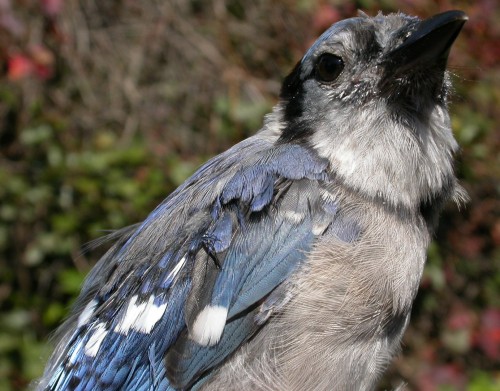
Photo by Marcel Gahbauer,
McGill Bird Observatory (QC), September 2005
Hatch-year
Blue Jays have brownish-blue primary coverts, with minimal dark barring
on the alula and primary coverts. In addition, a moult limit may be evident among the
greater coverts, as in the second photo below, where three dull outer greater
coverts contrast noticeably with the replaced bright blue inner greater
coverts. The first photo is of a younger bird, with none of the greater coverts yet replaced.
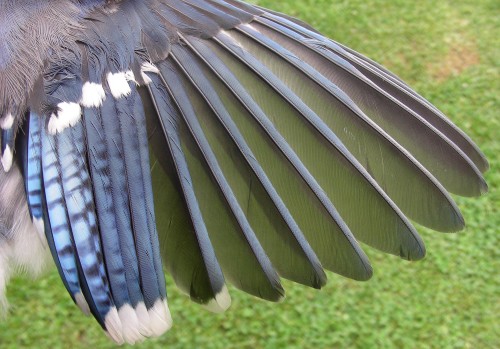
Photo by Marie-Anne Hudson, Le Nichoir (QC), August 2007
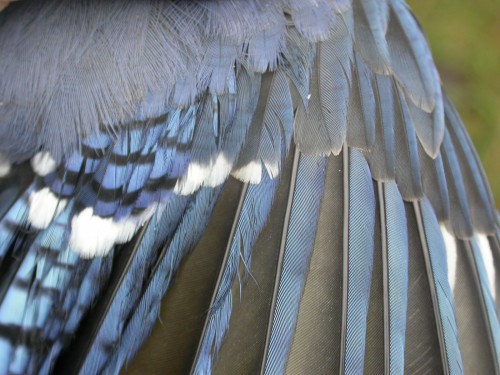
Photo by Marcel Gahbauer,
McGill Bird Observatory (QC), September 2005
The tail of Blue Jays is not particularly
indicative of age, though on hatch-year birds the blue tends to be
somewhat duller than on older birds.
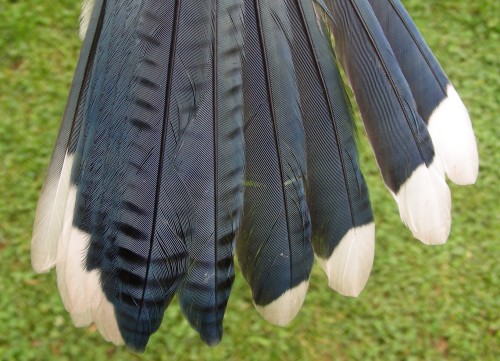
Photo by Marie-Anne Hudson,
Le Nichoir (QC), August 2007
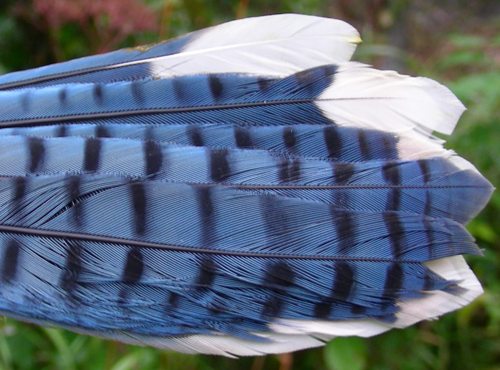
Photo by Marcel Gahbauer,
McGill Bird Observatory (QC), August 2008
RETURN TO AGE/SEX
OVERVIEW
|